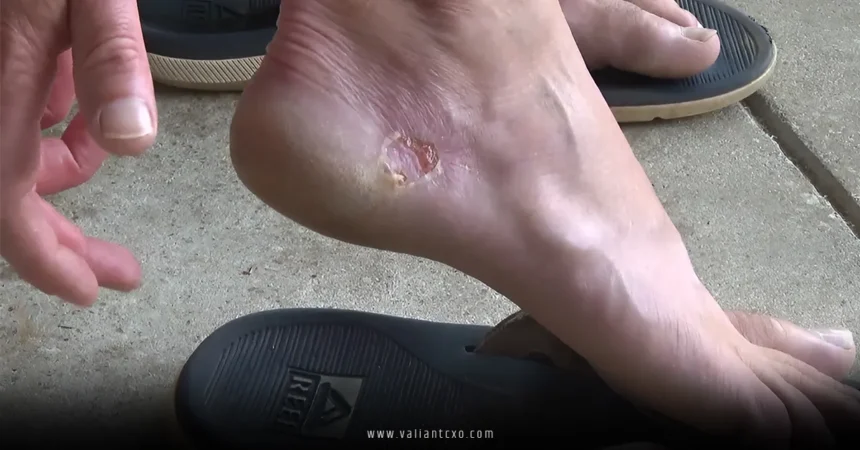Flesh eating bacteria sounds like something straight out of a horror movie, doesn’t it? The term alone conjures images of relentless microbes devouring tissue at an alarming pace. But what exactly are these so-called flesh eating bacteria, and why do they spark such fear? In this article, we’re diving deep into the world of these rare but serious infections, exploring what they are, how they spread, and what you can do to protect yourself. With a conversational tone and a touch of curiosity, let’s unravel the mystery behind flesh eating bacteria and arm you with knowledge to stay safe.
What Are Flesh Eating Bacteria?
Flesh eating bacteria, medically known as necrotizing fasciitis, aren’t a single type of bacteria but a group of microbes capable of causing severe, rapidly progressing infections. These bacteria invade the body’s soft tissues, destroying skin, muscle, and connective tissue in their path. Imagine a tiny army of invaders tearing through your body’s defenses faster than you can say “ouch.” The most common culprits include Streptococcus pyogenes (Group A Streptococcus), Staphylococcus aureus, and Vibrio vulnificus, but others like Clostridium species can also join the fray.
What makes flesh eating bacteria so terrifying? It’s their speed. These infections can spread within hours, turning a minor cut into a life-threatening situation. Unlike a typical infection that might make you feel lousy for a few days, flesh eating bacteria don’t mess around—they’re like a wildfire racing through dry grass.
How Do Flesh-Eating-Bacteria Invade?
The journey of flesh-eatin- bacteria begins with an entry point. It could be a small cut, a scrape, a surgical wound, or even an insect bite. Anything that breaks the skin can roll out the welcome mat for these microbes. Once inside, the bacteria release toxins that destroy tissue and impair your immune system’s ability to fight back. It’s like they’re throwing a chaotic party in your body, and your defenses are struggling to shut it down.
Interestingly, not every cut leads to necrotizing fasciitis. Your immune system is usually pretty good at handling minor invaders. But when conditions are just right—say, a weakened immune system or a particularly aggressive strain of bacteria—things can spiral out of control.
Symptoms of Flesh-Eating-Bacteria Infections
So, how do you know if you’re dealing with flesh eating bacteria? The symptoms can be sneaky at first, mimicking those of a regular infection. You might notice redness, swelling, or warmth around a wound. Sounds harmless, right? But with flesh eating bacteria, things escalate quickly. Within hours, you could experience:
- Severe pain disproportionate to the wound’s appearance—like your body’s screaming louder than it should.
- Fever and chills, as your immune system goes into overdrive.
- Blisters, ulcers, or black spots on the skin, signaling tissue death.
- Fatigue and confusion, as the infection spreads and toxins build up.
The hallmark of flesh-eating-bacteria is that intense, unrelenting pain. If a small cut feels like it’s been stabbed with a hot poker, that’s a red flag. Don’t ignore it—time is critical with these infections.
When to Seek Help for Flesh Eating Bacteria
Here’s the deal: flesh-eating-bacteria don’t give you the luxury of waiting it out. If you have a wound that’s rapidly worsening, especially with severe pain or fever, get to a doctor ASAP. Early intervention can be the difference between a full recovery and catastrophic consequences. Think of it like spotting a leak in your roof—you fix it before the whole house floods.
Causes and Risk Factors for Flesh Eating Bacteria
Why do some people get infections from flesh eating bacteria while others don’t? It’s a mix of bad luck and specific risk factors. These bacteria thrive in certain environments and target vulnerable individuals. Here’s what puts you at higher risk:
Common Entry Points for Flesh Eating Bacteria
Any break in the skin is an open door. Common culprits include:
- Cuts and scrapes: Even minor ones from shaving or gardening.
- Surgical wounds: Post-op infections are a known risk.
- Burns or bruises: Damaged skin is an easy target.
- Water exposure: Especially with Vibrio vulnificus, found in warm coastal waters.
Ever gone swimming in the ocean with a small cut? That’s a potential invitation for flesh eating bacteria, especially in warm climates where Vibrio loves to hang out.
Who’s Most at Risk?
While anyone can theoretically get necrotizing fasciitis, certain conditions make you more susceptible:
- Weakened immune system: Think diabetes, cancer, or HIV.
- Chronic illnesses: Liver disease or kidney issues can tip the scales.
- Obesity: Excess tissue can make infections harder to fight.
- Age: Older adults and young children are more vulnerable.
It’s like these bacteria are bullies, picking on those who are already down. But even healthy folks aren’t immune if the stars align for an infection.
Diagnosis and Treatment of Flesh Eating Bacteria
Catching flesh eating bacteria early is like defusing a ticking time bomb. Doctors rely on a combination of clinical evaluation, imaging, and lab tests to confirm the diagnosis. If they suspect necrotizing fasciitis, they won’t waste time—every minute counts.
How Doctors Diagnose Flesh Eating Bacteria
Your doctor will start by examining the wound and asking about symptoms. Severe pain that seems out of proportion to the injury is a big clue. They might order:
- Blood tests: To check for signs of infection or tissue damage.
- Imaging: CT scans or MRIs can reveal how deep the infection goes.
- Biopsies: A sample of tissue can confirm the presence of flesh eating bacteria.
It’s a race against time, and doctors know it. The sooner they identify the problem, the better your chances.
Treatment Options for Flesh Eating Bacteria
Treating flesh eating bacteria is like fighting a dragon—you need every weapon in your arsenal. The approach typically involves:
- Antibiotics: High-dose IV antibiotics to attack the bacteria head-on.
- Surgery: Debridement (removing dead tissue) is often necessary, and in severe cases, amputation may be the only way to stop the spread.
- Supportive care: Fluids, oxygen, or even ICU care to stabilize the patient.
Surgery is the heavy hitter here. Think of it as cutting out the rotten part of an apple to save the rest. It’s invasive, but it’s often the only way to stop flesh eating bacteria in their tracks.
Preventing Flesh Eating Bacteria Infections
Nobody wants to tangle with flesh eating bacteria, so prevention is your best friend. The good news? Simple habits can go a long way in keeping these microbes at bay.
Basic Hygiene to Ward Off Flesh Eating Bacteria
It’s not rocket science, but good hygiene is your first line of defense:
- Clean wounds promptly: Wash cuts with soap and water, then cover them with a bandage.
- Avoid contaminated water: Steer clear of swimming in warm, brackish water if you have open wounds.
- Monitor chronic conditions: Keep diabetes or other illnesses under control to strengthen your immune system.
Think of your skin as a fortress. Every time you clean a wound, you’re reinforcing the walls against invaders like flesh eating bacteria.
When to Be Extra Cautious
If you’re in a high-risk group or live in an area prone to Vibrio infections (like coastal regions), take extra precautions. Avoid raw seafood if you have liver disease, and always wear protective gear when handling fish or shellfish. It’s like putting on armor before heading into battle.
Myths and Misconceptions About Flesh Eating Bacteria
Flesh eating bacteria have a knack for sparking fear and confusion. Let’s clear up some common myths:
- Myth: Flesh eating bacteria are everywhere, ready to attack.
Truth: These infections are rare, with only about 700–1,200 cases per year in the U.S.. You’re not likely to encounter them in everyday life. - Myth: Only dirty wounds lead to flesh eating bacteria.
Truth: Even clean, minor cuts can become infected under the right conditions. - Myth: Antibiotics alone can cure it.
Truth: Surgery is almost always needed to remove dead tissue and stop the spread.
By separating fact from fiction, you can approach flesh eating bacteria with knowledge, not panic.
Real-Life Stories of Flesh Eating Bacteria
To bring this topic home, let’s talk about real people who’ve faced flesh eating bacteria. Take the story of a fisherman in Florida who contracted Vibrio vulnificus after a small cut got exposed to seawater. Within 24 hours, his leg swelled, and he was in agony. Thanks to quick surgery and antibiotics, he survived, but not without losing part of his leg. Stories like these remind us that flesh eating bacteria are rare but real—and acting fast is everything.
Or consider the case of a young athlete who ignored a “minor” infection after a sports injury. By the time he sought help, the infection had spread, requiring multiple surgeries. These stories aren’t meant to scare you but to underscore the importance of vigilance.
Conclusion: Stay Informed, Stay Safe
Flesh eating bacteria may sound like a nightmare, but understanding them takes away some of their power. By knowing the symptoms, risk factors, and prevention strategies, you’re better equipped to protect yourself and your loved ones. Necrotizing fasciitis is rare, but it’s serious, and early action is your best defense. So, keep those wounds clean, stay mindful of your health, and don’t hesitate to seek help if something feels off. Knowledge is your shield—wield it wisely.
FAQs About Flesh Eating Bacteria
1. What exactly causes flesh eating bacteria infections?
Flesh eating bacteria infections, or necrotizing fasciitis, are caused by aggressive bacteria like Streptococcus pyogenes or Vibrio vulnificus entering through a break in the skin. These microbes release toxins that destroy tissue rapidly.
2. Can flesh eating bacteria spread from person to person?
No, flesh eating bacteria infections aren’t typically contagious. They spread through direct contact with contaminated environments, like water or surfaces, not through casual contact like a cold.
3. How fast do flesh eating bacteria spread?
Flesh eating bacteria can spread within hours, turning a minor wound into a severe infection. Severe pain and rapid worsening are key signs to watch for.
4. Are there long-term effects after surviving a flesh eating bacteria infection?
Survivors may face scarring, tissue loss, or even amputation, depending on the infection’s severity. Physical therapy and emotional support are often needed for recovery.
5. How can I reduce my risk of flesh eating bacteria?
Keep wounds clean, avoid swimming in warm coastal waters with open cuts, and manage chronic conditions like diabetes. Quick action on suspicious symptoms is crucial.
For More Updates !! : valiantcxo.com


